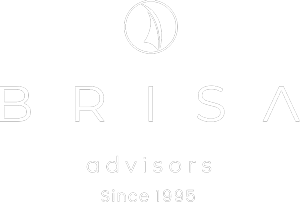Introduction
The Brazilian medical device market represents one of the largest opportunities in Latin America, with trade shows and events serving as crucial platforms for international manufacturers to showcase their innovations. Understanding the regulatory framework for importing medical devices specifically for exhibition purposes is essential for companies planning to participate in major events like Hospitalar and other health fairs in Brazil.
ANVISA’s Regulatory Framework for Exhibition Imports
The Brazilian Health Regulatory Agency (ANVISA) has established specific pathways for the temporary import of medical devices intended exclusively for demonstration and exhibition purposes. These regulations, primarily governed by RDC 751/2022 and other relevant RDCs, provide a streamlined process that differs significantly from standard commercial import procedures.
Key Regulatory Distinctions
Imports for exhibition are subject to different requirements compared to commercial imports, particularly regarding:
- GMP certification requirements
- Device registration obligations
- IFU (Instructions for Use) documentation
- Labeling and identification standards
Documentation Requirements for Exhibition Imports
Essential Documentation
- Authorization Request for Exhibition
- Detailed event information and booth location
- Complete device specifications and intended use
- Demonstration protocols and safety measures
- Technical Documentation
- Device technical specifications
- Safety data sheets
- IFUs in Portuguese (when applicable)
- Risk classification documentation
- Company Credentials
- Manufacturer authorization letters
- FDA registration documentation (if applicable)
- International certifications (ISO 13485, MDSAP, etc.)
ANVISA Submission Process
Companies must submit their import requests for exhibition through ANVISA’s official channels, ensuring all documentation aligns with current RDC requirements. The submission process typically requires:
- Direct communication with designated ANVISA contact representatives
- Verification of compliance with applicable medical device authority standards
- Coordination with event organizers and venue management
Compliance Considerations for Different Device Classes
Class I Devices
- Simplified documentation requirements
- Basic safety and performance documentation
- Standard IFU requirements
Class II and III Devices
- Enhanced documentation protocols
- Evidence of GMP facility certification
- Detailed risk assessment documentation
- Advanced IFUs with comprehensive safety information
Software as a Medical Device (SaMD)
For SaMD products, additional considerations include:
- Software validation documentation
- Cybersecurity risk assessments
- Identifier software compliance verification
- Data protection and privacy protocols
Strategic Advantages of Exhibition Participation
Market Access Benefits
Participating in Brazilian trade shows provides:
- Direct access to healthcare decision-makers
- Interaction opportunities with regulatory authorities
- Market intelligence gathering
- Partnership development prospects
Medical Device Consulting Partnerships
Working with specialized medical device consulting firms can significantly simplify the exhibition import process through:
- Ensuring regulatory compliance
- Facilitating ANVISA communications
- Providing local market expertise
- Managing documentation workflows
Post-Event Compliance Requirements
Device Disposal
All exhibition devices must be:
- Properly documented for export or destruction
- Maintained under appropriate storage conditions
- Tracked through ANVISA-approved disposal methods
- Reported through final compliance documentation
Documentation Retention
Companies must retain comprehensive records of:
- All exhibition activities and demonstrations
- Device usage logs and maintenance records
- Visitor interaction documentation
- Final disposal certificates
Technological Integration and Future Trends
Laboratory Developed Tests (LDTs)
The evolving landscape of laboratory developed tests presents new opportunities for exhibition participation, particularly for diagnostic device manufacturers seeking to demonstrate innovative testing solutions.
Digital Health Solutions
Modern exhibition strategies increasingly incorporate:
- SaMD demonstrations
- Identifier software showcases
- Digital health platform integrations
- Telemedicine solution presentations
Best Practices for Successful Exhibition Participation
Pre-Event Planning
- Engage the medical device authority early in the planning process.
- Coordinate with specialized medical device consulting services.
- Ensure all IFUs are properly translated and compliant.
- Verify the timeliness and validity of GMP documentation.
During the Exhibition
- Maintain detailed demonstration logs.
- Ensure proper device handling and storage.
- Document all regulatory inquiries and responses.
- Coordinate with ANVISA representatives as needed.
Post-Event Follow-up
- Complete all necessary disposal documentation.
- Maintain comprehensive event records.
- Analyze market feedback and regulatory insights.
- Plan future exhibition strategies based on outcomes.
Conclusion
Successfully importing medical devices for exhibition in Brazil requires careful attention to ANVISA’s regulatory framework and compliance with current RDCs. Companies that invest in proper planning, documentation, and medical device consulting support can leverage these events to build significant market presence and regulatory relationships. As events like Hospitalar continue to grow in importance, understanding these regulatory pathways becomes increasingly critical for international medical device manufacturers seeking to enter the Brazilian market.
For companies planning exhibition participation, early engagement with ANVISA and specialized regulatory consultants ensures smooth import processes and successful event outcomes.
Find out more about BPO in RA!
*Budget for registration ownership transfer, Market Access Strategy, and BPO in RA services for your company: www.brisa.com.br



